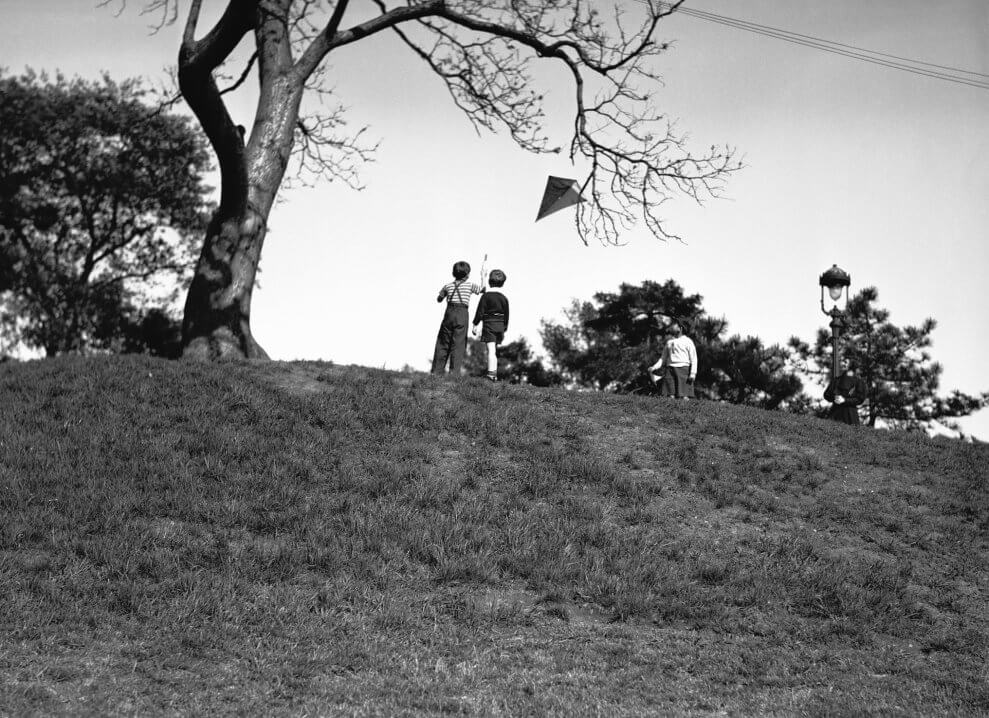
How to get your kids to spend more time moving with a simple recipe called physical literacy
In the first article of this three-part series, we introduced a proven and simple recipe to get kids moving called physical literacy.
“The power of this recipe comes from the three healthy ingredients that ‘boost’ each other’s goodness. It’s a perfect circle.”
– Richard Monette
Also in this series
The sure-bet recipe to raise kids who love (and want) to get active

In the second article, we explained how easy this recipe is to remember: Serve kids a daily diet of games and activities made up of roughly ⅓ skills development, ⅓ confidence-boosting, and ⅓ love of movement and they’re on their way to building the very healthy habit of being active.
A “new and improved” recipe for today’s challenges
Physical literacy is actually a new twist on a recipe that has been around for a very long time. And a new twist is exactly what we need to get kids active in today’s world.
Our society has changed a lot in a short period of time. Apple launched its first iPhone in 2007. Since then, smartphones have evolved to be more powerful, easier to use, and more addictive. Think about how it has become part of your daily routine.

Now think about kids born in the smartphone era. They have instant access to unlimited entertainment and social connection. And kids can’t resist, so they spend hours every day in the digital world.
But it’s not only technology that’s nudging kids to be inactive. Playing outdoors with other kids was a daily routine for previous generations, but it’s not for today’s kids.
Well-intentioned adults want to keep kids safe. This leads to parents who won’t allow their kids to play outdoors unsupervised. And schools and communities then ban many active games like throwing a ball or playing tag.
Over the last 20 years or so, play has moved from outdoors and active to indoors and sedentary. As a result, kids are moving less than they ever have. And that’s not good.

“Tell kids to get active. To do jumping jacks, push-ups or whatever…”
Faced with a generation of inactive kids, some revert to solutions that worked in the past. They use the “tell kids to go play outside like my mom used to do” recipe.
But it’s a very different world with new challenges that require new solutions and new recipes.
A recent article in The Atlantic shows what happens when you “serve” an outdated recipe to get kids active.
Fitness Now was a Texas state-wide program that ran from 2007 to 2011. The idea was to serve middle-schoolers daily physical education to improve their health and school grades.
Great idea, most would say. Kids need to move every day! They will do it at school. What could go wrong?
The program failed. Students’ health and grades did not improve.
The report stated that the “old-school” version of physical education served to kids was no fun. And as a result, bored students caused trouble or skipped class.
One issue was that programs were heavy on skill acquisition at the expense of fun and active play. Imagine a class of Grade 7 students waiting in line to kick the soccer ball once every five minutes. They may have improved their kicking skills, but not their confidence or their love of soccer.
This recipe served to kids did not taste right to them. It had too much instruction and not enough play. It might have gotten them to move in class, but it led many kids to dislike physical education.
Related video: Learn about the benefits of serving daily physical literacy to children
The time for developing physical literacy in kids is now
No one can deny that to be healthy, humans old and young must move. It’s an undeniable and universal fact.
And that’s why it is alarming that today’s kids grow up in a world that reinforces sedentary habits. Think about it:
- Parents handing their iPad to their two-year-old to occupy them.
- Daycares that keep children inside when the ground is wet.
- Schools that ban play at recess due to liability concerns.
- Tweens bombarded with hundreds of instant rewards by their smartphones.
The many “nudges” add up. And the unintended outcome is that kids develop inactive and sedentary habits. As we know, habits that are learned early in life are hard to break.
“A nudge is any small feature in the environment that attracts our attention and influences our behaviours.”
Richard Thaler, co-author of “Nudge,” from this three-minute video
Our challenge as a society is to get kids moving again. And to do so, we must offset the many daily nudges to inactivity served to kids with as many daily nudges to physical activity.
Physical literacy is the perfect recipe to achieve this goal. If we all serve this powerful recipe to kids—at home, in childcare centres, at school, in our communities—we can succeed.
Imagine a world in which kids choose to move because they’ve learned to enjoy being active. Imagine these kids choosing to stay active through their teens and into adulthood. Even better, imagine them raising the next generation of active and healthy children.






The secret to getting kids active is giving them many choices to play
well of course but what will there choices be